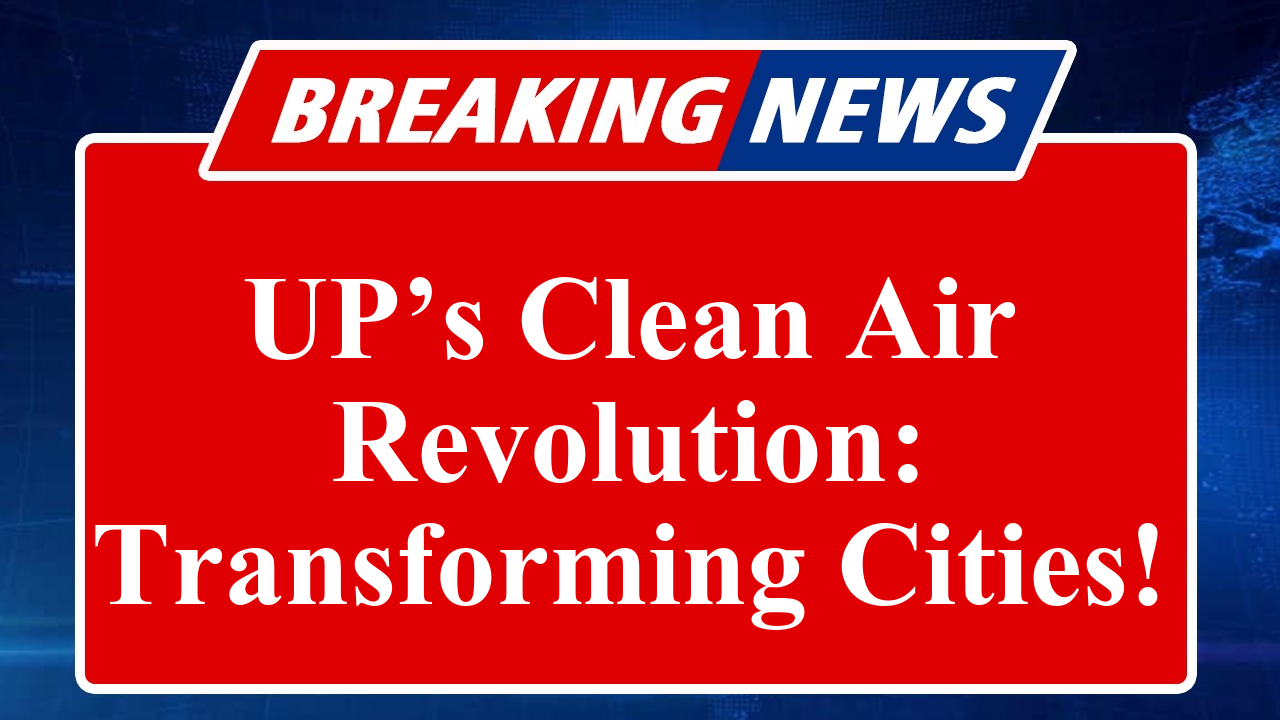Uttar Pradesh has intensified its anti-pollution efforts, securing significant funds to enhance air quality and urban cleanliness in cities like Lucknow and Prayagraj. The state’s National Clean Air Programme (NCAP) initiatives, backed by central funding, focus on reducing PM2.5 levels, promoting sustainable practices, and improving waste management. These efforts align with Swachh Bharat’s goals, making UP a leader in urban environmental reform.
Uttar Pradesh Ramps Up Anti-Pollution Efforts with Major Funding
In a significant push to combat air pollution and elevate urban cleanliness, Uttar Pradesh has emerged as a frontrunner in India’s environmental reform landscape. The state, crowned the cleanest in the Swachh Survekshan Awards 2024-25, is leveraging substantial funds under the National Clean Air Programme (NCAP) to transform its cities into cleaner, healthier urban hubs. Cities like Lucknow, Prayagraj, and Agra are at the forefront of this initiative, showcasing measurable progress in air quality and waste management.
The NCAP, launched in 2019 by the Ministry of Environment, Forest and Climate Change, targets a 20-30% reduction in PM2.5 and PM10 concentrations by 2024, using 2017 as the baseline. Uttar Pradesh has received a significant share of the ₹9,000 crore allocated for 131 non-attainment cities—urban areas consistently exceeding national air quality standards. In 2020, the 15th Finance Commission allocated ₹1.7 billion for 42 Indian cities with populations over one million, including Lucknow and Kanpur, with a mandate to reduce air pollution by 15% annually. Uttar Pradesh has utilized these funds to enhance air quality monitoring, promote electric public transport, and curb industrial emissions.
Lucknow, ranked third among cities with over a million residents in the Swachh Survekshan 2024-25, has earned a 7-Star Garbage Free City certification. The city has implemented advanced waste segregation systems, regular cleanliness drives, and eco-friendly infrastructure upgrades. Prayagraj, named the ‘Cleanest Ganga City,’ has focused on reducing river pollution through stringent waste management and community-led initiatives. Agra, home to the Taj Mahal, secured the title of ‘Emerging Clean City’ by improving sanitation and green cover, making it a model for heritage cities.
The state’s success stems from a multi-pronged approach. Under the NCAP, Uttar Pradesh has deployed low-cost air quality sensors, particularly in the Indo-Gangetic Plain, to monitor PM2.5 levels in real-time. These sensors, supported by collaborations with institutions like IIT Kanpur, provide granular data to pinpoint pollution sources, such as vehicular emissions and construction dust. The state has also introduced 1,000 electric buses to its fleet, reducing reliance on diesel vehicles, a major contributor to PM2.5 pollution.
Beyond urban centers, Uttar Pradesh is addressing rural pollution, which accounts for nearly half of the state’s PM2.5 emissions due to agricultural practices like stubble burning. The state is promoting alternatives like bio-decomposers and incentivizing farmers to adopt sustainable methods. Additionally, the ban on single-use plastics and the expansion of green corridors, such as the Great Green Wall of Aravalli, are bolstering the state’s environmental credentials.
Despite these strides, challenges remain. A 2023 analysis by Climate Trends revealed that rural and urban PM2.5 levels in India are nearly identical, with rural areas often overlooked in funding allocations. Uttar Pradesh is countering this by integrating district-level environmental plans, a bottom-up approach pioneered in 2019. Over 100 districts have submitted plans focusing on waste management, noise pollution, and stubble burning, ensuring a holistic anti-pollution strategy.
The Swachh Survekshan 2024-25, conducted by the Ministry of Housing and Urban Affairs, highlighted Uttar Pradesh’s leadership in urban cleanliness. The awards, presented by President Droupadi Murmu on July 17, 2025, in New Delhi, recognized the state’s innovative waste-to-wealth initiatives and citizen participation. Smaller cities like Moradabad and Bijnor also shone, ranking high in cleanliness and Ganga town categories, respectively.
Uttar Pradesh’s efforts align with global best practices. The state is exploring airshed-based approaches, inspired by cities like Mexico City and Los Angeles, to tackle pollution beyond city limits. By coordinating with neighboring states and using satellite data to monitor pollution sources, Uttar Pradesh aims to create a regional framework for cleaner air.
The state’s proactive stance is also attracting private sector involvement. The Gujarat model, where the world’s first particulate emissions trading scheme was launched in Surat, is being studied for potential replication in Uttar Pradesh. This market-based approach incentivizes industries to reduce emissions by trading permits, ensuring financial accountability for polluters.
As Uttar Pradesh continues its anti-pollution drive, the focus remains on data-driven interventions, community engagement, and sustainable urban planning. With cities like Lucknow and Prayagraj setting benchmarks, the state is not only improving air quality but also redefining urban living in India.
Disclaimer: This article is based on recent news reports, government announcements, and data from sources like the Swachh Survekshan 2024-25, the National Clean Air Programme, and analyses by Climate Trends and IIT Kanpur. Information is accurate as of August 4, 2025, and subject to change based on new developments.

